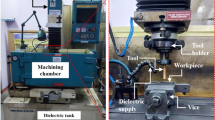Abstract
The bursting of gas bubbles during the melting process in nuclear decommissioning generates radioactive aerosols, causing the internal exposure of workers. In contrast to external exposure, real-time measurements and visual management cannot be applied to internal exposure cases. This study evaluated the degree of internal exposure of workers at the Kozloduy Nuclear Power Plant plasma melting facility by analyzing the data on nuclides and concentrations collected from a HEPA filter. The radiation exposure scenario was selected considering the working environment, nuclides, concentrations, working time, activity median aerodynamic diameter, and chemical form. Workers’ internal-exposure dose rates were evaluated using the IMBA (integrated modules for bioassay analysis) code.







Similar content being viewed by others
References
S.Y. Choi (2021) Evaluation of applicability of 100kW plasma torch melting system for radioactive waste, Korean radioactive waste society
A state of the art on the technology for melting and recycling of the radioactive metallic waste, Korea Atomic Energy Research Institute (KAERI), KAERI/AR-716/2004
Kim SI et al (2021) Evaluation of internal exposure to radioactive aerosol generated from plasma melting system using the Bidas code. Radiat Prot Dosimet. https://doi.org/10.1093/rpd/ncab061
Kim SI, Lee HY, Song JS (2018) A study on Characteristics and internal exposure evaluation of radioactive aerosols during pipe cutting in decommissioning of nuclear power plant. Nucl Eng Technol. https://doi.org/10.1016/j.net.2018.06.010
Assessing dose of the representative person for the purpose of radiation protection of the public, The Korean association for radiation protection (KARP), ICRP publication 101 A, 2005
Environmental impact assessment report for the decommissioning of units 1 to 4 at Kozloduy nuclear power plant, EWN final report, Pl6Del09Rev02-EIA-R-Chapter 1, 2013
Environmental impact assessment report for the facility for treatment and conditioning of radioactive waste with a high volume reduction Factor at Kozloduy nuclear power plant, EWN Final Report, P5Cd03Rev.02-EIA-R-Chapter 4, 2013
Human Respiratory Tract Model for Radiological Protection (1994) ICRP Publication 66. Pergamon, Chairman
Recommendations of the International Commission on Radiological Protection (1990) ICRP Publication 60. Pergamon Press, Oxford
Fell TP, Phipps AW, Smith TJ (2007) The internal dosimetry code PLEIADES. Radiat Prot Dosimetry 124(4):327–338
J.W. Marsh, A. Birchall, and N.S. Jarvis, (2002) Validation of IMBA and IMBA expert TM. In: Proceedings of the 2002 towards harmonisation of radiation protection in Europe: European IRPA Congress, vol. 37, pp. 243–278
The 2007 Recommendations of the International Commission on Radiological Protection, ICRP Publication 103, ELSEVIER, J. VALENTIN, 2007
Occupational Intakes of Radionuclides: Part 1, ICRP Publication 130, Ann, 2015
Occupational Intakes of Radionuclides: Part 2, ICRP Publication 134, Ann, 2016
Occupational Intakes of Radionuclides: Part 3, ICRP Publication 137, Ann, 2017
Occupational Intakes of Radionuclides: Part 4, ICRP Publication 141, Ann, 2019
H. K. Jang, et al. (2012) Development of internal exposure dose assessment techniques for domestic workers using radiation and radioisotopes
Acknowledgements
This study was supported by the Nuclear Power Core Technology Development Program of the Korea Institute of Energy Technology Evaluation and Planning (KETEP), granted financial resource from the Ministry of Trade, Industry & Energy, Republic of Korea. (No. 20214000000070). This study was supported by the Nuclear Power Core Technology Development Program of the Korea Institute of Energy Technology Evaluation and Planning (KETEP), granted financial resource from the Ministry of Trade, Industry & Energy, Republic of Korea. (No.20191510301240)
Author information
Authors and Affiliations
Corresponding authors
Additional information
Publisher's Note
Springer Nature remains neutral with regard to jurisdictional claims in published maps and institutional affiliations.
Rights and permissions
Springer Nature or its licensor holds exclusive rights to this article under a publishing agreement with the author(s) or other rightsholder(s); author self-archiving of the accepted manuscript version of this article is solely governed by the terms of such publishing agreement and applicable law.
About this article
Cite this article
Lee, H.Y., Yang, K.T., An, J.Y. et al. Evaluation of workers’ internal exposure because of inhalation of radioactive aerosols in a plasma melting facility by using IMBA and TAURUS codes. J Radioanal Nucl Chem 331, 4397–4404 (2022). https://doi.org/10.1007/s10967-022-08512-w
Received:
Accepted:
Published:
Issue Date:
DOI: https://doi.org/10.1007/s10967-022-08512-w




